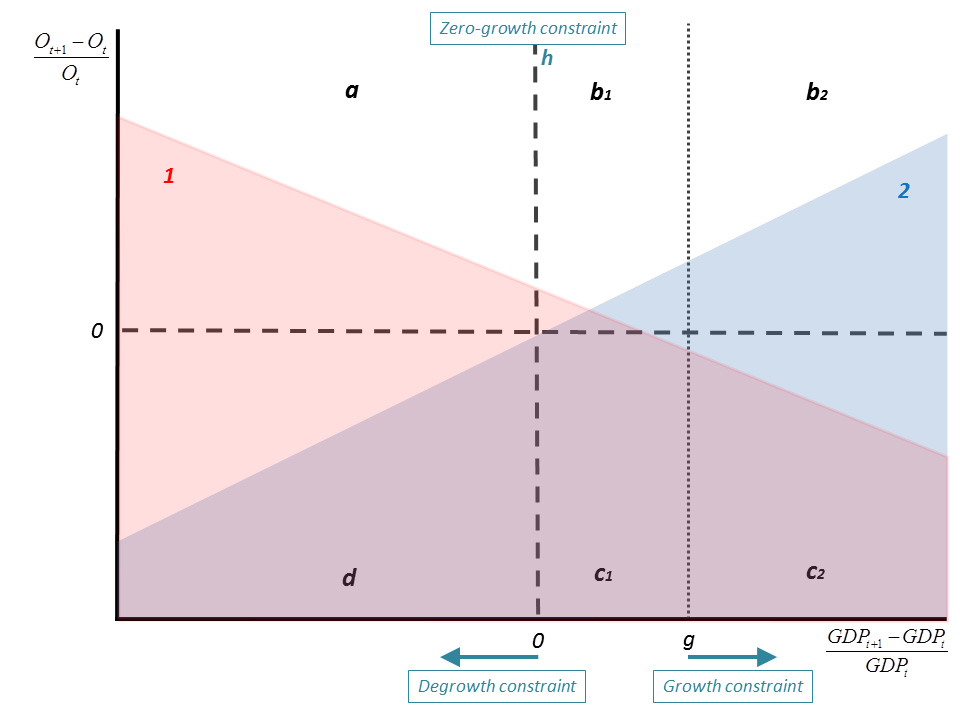The fear that stringent climate policy will hamper future economic growth is an important reason for many voters and politicians to be hesitant about giving their support to it. It partly explains why the 2009 Copenhagen climate summit largely failed and the recent Paris Agreement was designed around voluntary climate targets instead of effective policies. As the window to curb warming at 2°C closes, the debate on growth-versus-climate is likely to intensify. A critical review of theoretical and empirical findings indicates that the two polar positions, ‘green growth’ and ‘anti-growth’, are both risky and not guaranteed to combine climate and social goals.
This does not mean that green growth is impossible. The economy has a tremendous flexibility to change. It just needs to be triggered by effective climate policies. A precautionary strategy would, though, involve preparing society for the scenario that green policies do not go along with growth. Some have responded with a radical proposal for ‘degrowth’. Aside from being politically unrealistic, it confuses cause and effect: perhaps climate policy will result in negative growth, but this does not imply a reverse causality, that a negative growth strategy effectively solves climate change.
A third option has been overlooked: a ‘growth-agnostic’ or ‘agrowth’ strategy. Its motivation is the insight that GDP (gross domestic product) is not a good proxy of social welfare. Hence, this strategy is to ignore time changes in GDP. This allows for unconstrained search in the largest area in the accompanying Figure 1, namely a + b1+ b2, meaning maximum flexibility to reach a high level of social welfare, and avoid ending up in undesirable areas c1, c2 or d. An agrowth strategy does not beforehand exclude any option: negative growth (area a), zero-growth (line h), low growth (b1) or high growth (b2). It just aims to achieve acceptable values of factors contributing to human well-being (O), including employment, equity and a safe climate.
An agrowth strategy can depolarize the growth-versus-climate debate and reduce resistance to effective climate policy. It is elaborated in six concrete strategies.
Reference
